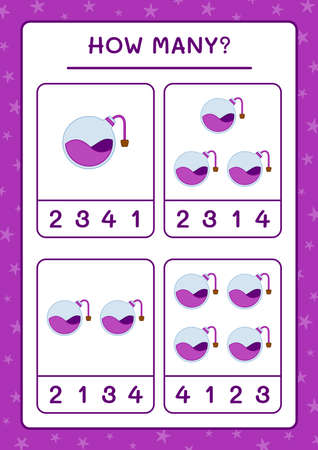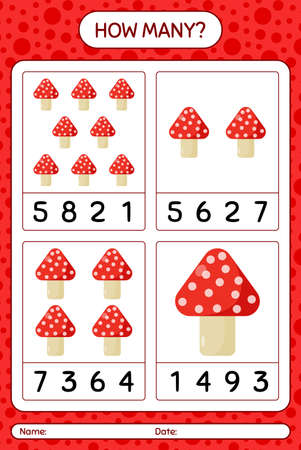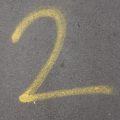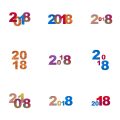Introduction to Three-Card Tarot Spreads
The three-card tarot spread is one of the most popular and approachable ways to use tarot in everyday life, especially across the United States. While tarot cards have roots in European history, the three-card format has become a favorite among Americans for its simplicity and versatility. Whether you’re new to tarot or just looking for a quick daily check-in, this method can offer valuable guidance without feeling overwhelming.
Origins and Evolution of the Three-Card Spread
Tarot reading began centuries ago as a complex form of divination, often involving large spreads and intricate symbolism. Over time, people in the U.S. started adapting tarot to suit busy lifestyles, seeking straightforward tools for self-reflection. The three-card spread gained traction because it’s easy to learn and can be used anywhere—from your kitchen table to a coffee shop. Today, it’s a staple in both online tarot communities and local metaphysical shops across America.
Why Three Cards?
The magic of the three-card spread lies in its balance: it offers enough information to provide insight, but not so much that it confuses or intimidates beginners. With just three cards, you can explore past influences, current situations, and potential outcomes—or any other trio of perspectives that fits your question.
Common Uses for Three-Card Spreads in Daily Life
| Purpose | Example Card Positions | How It Helps |
|---|---|---|
| Daily Guidance | Situation → Challenge → Advice | Offers quick clarity on what to expect each day |
| Decision-Making | Option 1 → Option 2 → Outcome | Simplifies complex choices by comparing options side by side |
| Self-Reflection | Mind → Body → Spirit | Encourages holistic self-check-ins and mindfulness |
User-Friendly and Accessible for All Levels
You don’t need years of study or psychic abilities to benefit from a three-card tarot reading. Many Americans turn to this spread as a morning ritual or whenever they feel stuck during the day. It’s also popular in group settings—at parties or workshops—where people want meaningful insights without getting bogged down in complicated card layouts.
2. How to Lay Out and Interpret the Three Cards
Learning how to arrange and read a three-card tarot spread is an exciting way to start your tarot journey. This guide will walk you through each step, making it simple to use for daily guidance or when facing important decisions. The three-card spread is popular in the United States because it’s straightforward, flexible, and perfect for both beginners and experienced readers.
Step-by-Step Guide to Arranging Your Three-Card Spread
Step 1: Shuffle Your Deck
Hold your deck comfortably and shuffle the cards while thinking about your question or intention. Many Americans find it helpful to say their question out loud or write it down for extra clarity.
Step 2: Draw Three Cards
After shuffling, draw three cards from the top of the deck and lay them face-down in a row from left to right.
Step 3: Assign Positions
The meaning of each card depends on its position. Here are some common ways Americans interpret these positions:
| Position | Classic Meaning | Cultural Nuance (U.S.) |
|---|---|---|
| 1st Card (Left) | Past | Your background or influences leading up to now |
| 2nd Card (Middle) | Present | Your current situation or challenge |
| 3rd Card (Right) | Future | Possible outcome or advice for moving forward |
Other Popular Three-Card Layouts in America
| Layout Theme | Left Card | Middle Card | Right Card |
|---|---|---|---|
| Situation-Action-Outcome | The issue at hand | Your recommended action | The likely result if you follow advice |
| You-Them-Relationship (for love readings) | Your feelings/role | Their feelings/role | The dynamic between you two |
| Mind-Body-Spirit (for wellness) | Your thoughts/mental state | Your physical well-being | Your spiritual growth or needs |
Interpreting Each Card with American Perspectives in Mind
- Straightforward Language: When reading the cards, use clear and positive language. Many Americans appreciate uplifting messages that focus on empowerment and personal growth.
- Cultural Symbols: Some traditional tarot symbols may feel unfamiliar, but many decks available in the U.S. feature diverse art styles and relatable imagery—don’t hesitate to choose a deck that resonates with your values or identity.
- No Need for Superstition: In American culture, tarot is often seen as a tool for self-reflection rather than fortune-telling. Focus on what insights the cards offer about your choices and mindset.
- Personalize Your Interpretation: Trust your intuition! It’s common in the U.S. tarot community to blend card meanings with your own experiences and feelings.
- Treat Tarot as Guidance: Remember, tarot doesn’t predict your destiny—it offers suggestions based on the energy around you today.
Troubleshooting Tips for Beginners in America:
- If you get stuck, look up card meanings online—there are many free resources tailored for American readers.
- If a card feels confusing, think about what the picture reminds you of in your own life—that’s often where the message lies.
- If you’re unsure about reversed cards (cards upside down), know that many Americans read only upright meanings at first. It’s perfectly okay!
- If you want privacy, do your reading somewhere comfortable—like your bedroom or favorite coffee shop—where you feel relaxed and focused.
Remember: Practice makes perfect!
The more often you practice this simple three-card spread, the easier it becomes to understand what the tarot is telling you each day. Use this guide as your reference whenever you need clear advice or a moment of reflection before making decisions.

3. Practical Applications for Daily Guidance
Three-card tarot spreads are incredibly popular among Americans seeking quick, practical guidance for everyday life. Whether you’re curious about a work situation, wondering about a relationship, or simply want advice on daily choices, the three-card spread offers a straightforward way to gain clarity and direction.
How Three-Card Spreads Support Everyday Decisions
The most common method is drawing three cards—often interpreted as Past, Present, and Future or Situation, Action, and Outcome. This flexible format lets you apply tarot to nearly any question that comes up in daily life. For example, if you’re considering switching jobs, navigating a friendship challenge, or figuring out how to approach a busy week, a three-card reading can offer insight that feels both personal and actionable.
Real-Life Examples: American Lifestyle Scenarios
| Situation | Sample Question | Three-Card Spread Positions | Typical Interpretation |
|---|---|---|---|
| Career Choice | “Should I accept this new job offer?” | Option A / Option B / Advice | Compare strengths of each job; final card gives guidance on best fit for your goals and values. |
| Relationship Advice | “How can I improve communication with my partner?” | You / Your Partner / Relationship Dynamics | See each persons perspective and what energy influences the relationship most right now. |
| Daily Guidance | “What should I focus on today?” | Main Theme / Challenge / Opportunity | Identifies priority, potential obstacles, and how to make the most of the day. |
| Friendship Dilemma | “How do I handle tension with my friend?” | Your Feelings / Their Feelings / Best Approach | Helps clarify misunderstandings and suggests healthy ways to reconnect. |
| Personal Growth | “What’s holding me back right now?” | Current Block / Advice / Potential Outcome | Pins down what’s keeping you stuck and how to move forward confidently. |
Tapping into Tarot for Everyday Wisdom
You don’t need to be an expert or have decades of experience to benefit from three-card spreads. Many Americans keep a deck on their nightstand or kitchen counter for quick morning readings before heading off to work or school. Others pull cards during lunch breaks or evening wind-downs as a form of self-care. The beauty of this approach is its simplicity—it fits seamlessly into modern life while still offering meaningful insights.
4. Tips for Getting the Most from Your Readings
Ask the Right Questions
The way you frame your question can make or break your three-card tarot reading. Instead of yes-or-no questions, focus on open-ended prompts that invite insight and clarity. Try questions like “What energy should I bring to today’s challenges?” or “What can help me make my decision about this new job?” This approach encourages richer, more actionable guidance.
Examples of Effective Tarot Questions
| Instead of… | Try asking… |
|---|---|
| Will I get promoted? | What steps can I take to advance my career? |
| Should I move to a new city? | What should I consider before relocating? |
| Is this relationship right for me? | How can I nurture healthy connections in my life? |
Maintain Objectivity and Openness
It’s easy to look for what you want to hear, especially when life gets stressful. When pulling your three cards, try to set aside expectations and read each card for what it offers, not just what fits your hopes. If a card seems negative or confusing, remember it may be highlighting something important for you to address.
Staying Objective: Quick Tips
- Avoid repeating readings on the same question—give yourself time to reflect first.
- If a card stirs strong emotions, jot down your feelings but revisit its meaning later with fresh eyes.
- Consider journaling each reading; over time, patterns and deeper messages will emerge.
Integrate Tarot into Your Busy Day
Your three-card spread doesn’t have to take hours or become another item on a long to-do list. Many Americans find success weaving quick tarot moments into their daily routines—right before morning coffee, as a lunchtime reset, or during evening wind-downs. This makes tarot a practical tool for ongoing guidance instead of a one-time ritual.
Ways to Fit Tarot into Everyday Life
| Routine Moment | How to Use Tarot |
|---|---|
| Morning (before work) | Set intentions for your day with a quick three-card pull. |
| Lunchtime break | Ponder a pressing decision with a simple spread over your sandwich. |
| Evening reflection | Review your day and gather insights for tomorrow. |
The key is consistency: even five minutes a day is enough to connect with your intuition and keep tarot insights relevant in your busy American lifestyle.
5. Resources and Communities for Tarot Enthusiasts
Exploring Three-Card Tarot Spreads is even more rewarding when you connect with others who share your interest. In the United States, there are plenty of resources and welcoming communities to help you build confidence, expand your knowledge, and make new friends along the way.
American-Based Tarot Resources
Whether youre a beginner or an experienced reader, these resources can guide your journey:
| Resource Type | Name/Website | Description |
|---|---|---|
| Online Learning | Biddy Tarot | Comprehensive tarot guides, courses, and a supportive blog. |
| Community Forum | Tarot Forum | A vibrant online space to ask questions and share experiences. |
| Local Meetups | Meetup.com – Tarot Groups | Find tarot meetups and workshops in cities across the US. |
| Bookstores & Shops | Your Local Metaphysical Store | Check out tarot decks, guidebooks, and classes in person. |
| Social Media Groups | Facebook, Reddit (r/tarot) | Join discussions, share spreads, and connect anytime. |
Inclusive Spaces for All Levels
The American tarot community values inclusivity and support. Many groups specifically welcome beginners, LGBTQ+ members, and people from all backgrounds. If you’re new to Three-Card Tarot Spreads or want to practice reading for others, look for these features in local or online spaces:
- Beginner-Friendly Workshops: Step-by-step sessions for interpreting three-card readings.
- No-Judgment Zones: Safe spaces to learn at your own pace without pressure.
- Diverse Voices: Communities that celebrate different cultures, backgrounds, and perspectives.
- Mental Health Support: Groups that focus on self-care through tarot guidance.
How to Find Your Tarot Community
If youre ready to take your Three-Card Tarot Spread practice further, here are simple ways to get started:
- Search Meetup.com or Eventbrite: Look up “tarot” plus your city to find gatherings near you.
- Visit Local Bookstores: Ask about tarot nights or bulletin boards with group listings.
- Engage Online: Join Facebook groups or subreddits like r/tarot for instant support and inspiration.
- Attend Virtual Events: Many organizations host Zoom workshops where you can join from anywhere in the US.
Your Journey Continues Together
You dont have to explore Three-Card Tarot Spreads alone! With so many resources and communities available across America—both online and offline—you’ll find plenty of encouragement as you unlock daily guidance and strengthen your decision-making skills with tarot.


